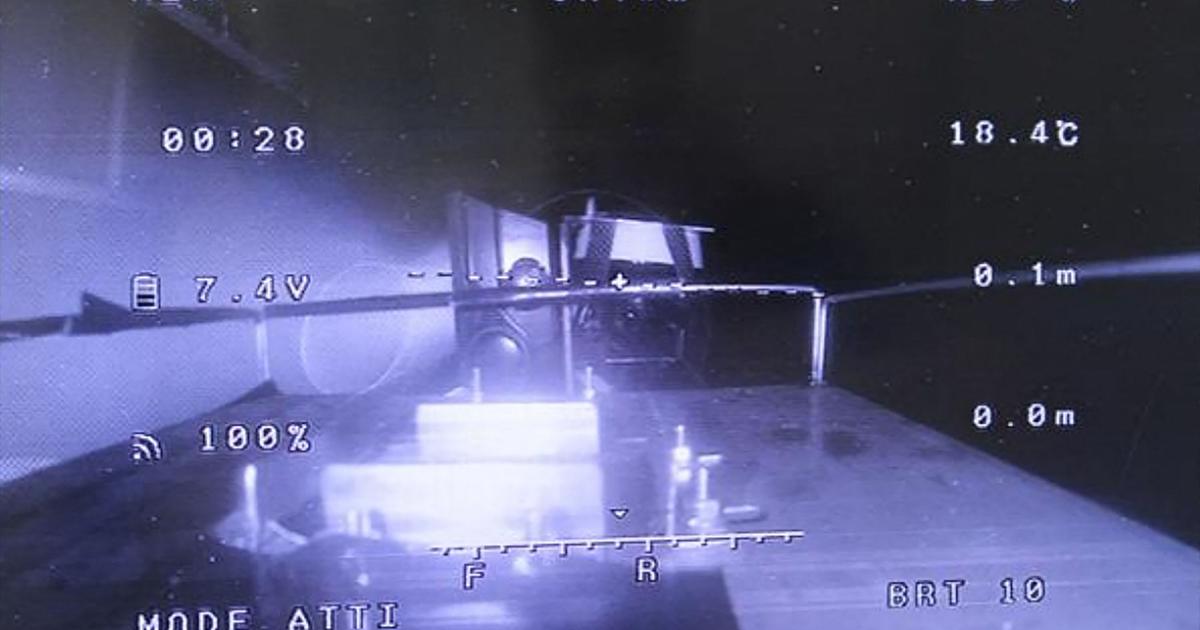By Evan
BushNBC News
When an earthquake struck near the South Sandwich Islands in the South Atlantic in August last year, scientists knew something strange was going on.
“Within 20 or 25 minutes we realized that something strange was happening,” recalled Stuart Weinstein, deputy director of the Pacific Tsunami Warning Center, part of the National Oceanic and Atmospheric Administration.
[A protected marine corridor: the Galapagos Marine Reserve is inaugurated]
The algorithms that characterize earthquakes were failing.
A tsunami was triggered that would send waves that would go around the world.
New research suggests that a hidden earthquake -- larger than initial estimates -- sent that tsunami from islands east of the southern tip of South America to Alaska.
The hidden quake, which rumbled under remote ice-covered islands, initially went unnoticed because it was part of a complex series of tremors, according to a study published Tuesday in the journal Geophysical Research Letters.
That day, tsunami watchers were put on alert after the 7.5-magnitude earthquake struck about 29 miles (46.6 kilometers) below the Earth's surface.
But such a small deep earthquake is unlikely to produce a powerful tsunami, so they were surprised at the size of the waves it generated.
Antarctic seals and king penguins on a beach on Salisbury Plain on South Georgia Island, near the South Sandwich Islands, where a series of earthquakes occurred in August. Wolfgang Kaehler / LightRocket via Getty Images
"We noticed the tsunami right away," said Summer Ohlendorf, a science officer at the US National Tsunami Warning Center, who was not involved in the new research.
"It was a little bit larger than would have been expected based on the parameters of the earthquake."
[These Colombians make music with garbage to raise awareness]
The new study indicates that there were actually five quakes lasting several minutes, including a much shallower 8.2-magnitude one that early reports failed to identify and likely caused the tsunami.
The analysis could help improve earthquake warning systems to take more account of unusual and complex events.
The quake produced waves with amplitudes of more than 60 centimeters at the nearest tide gauge, before spreading around the world with smaller impacts.
"It was powerful enough that it spread throughout the Southern Ocean and all the major ocean basins," Weinstein said.
"It was recorded by sea level stations around the world," he added.
He said there are no hard and fast rules about when a tsunami can cause flooding because it very much depends on the nature of the affected coastline.
But when waves exceed three feet (one meter) is when "you have to worry about the threat of flooding," he explained.
[This wolf traveled tens of miles in search of a mate. An obstacle prevented it: the border wall]
The seismic signals from all of these events interfered with each other because they occurred in close succession, according to Zhe Jia, a seismologist at the California Institute of Technology and lead author of the study.
The initial earthquake masked the most powerful and slowest, which was the third in the series.
Planet Earth: They use microorganisms native to Antarctica to eliminate contamination
Feb. 6, 202201:15
“The third is very special.
It's quiet,” she noted.
"A huge, hidden, slow event like the third sub-event could lead to a significant underestimation of tsunamis," she added.
The South Sandwich Islands, a British Overseas Territory, are a series of small volcanic landmasses that lie more than 1,000 miles (1,609 kilometers) from the southern tip of South America.
About half of the islands' landscape is permanently covered in ice.
[Climate Emergency Reduces Monarch Butterfly Population]
No one lives on the islands permanently and they do not have hotels, but researchers and tourists can visit and even get married on them, according to their territorial government.
They will have more penguins and seals than people as wedding guests.
The earthquake shook the islands.
"If the same quake occurred in densely populated regions... it would probably be more devastating," Jia predicted.
The island does not have equipment to measure seismic events, according to the researchers.
“It's in a pretty remote location, it's pretty hard to study earthquakes like that.
There's not a lot of data available to study," said Jeremy Maurer, associate professor of geoscience at Missouri University of Science and Technology.
To examine what happened in detail, Caltech researchers built a new algorithm capable of breaking the earthquake down into five different seismic events.
[Argentina seeks those responsible for the slaughter of about 100 Magellanic penguins]
The researchers found that the largest earthquake - which lasted for more than 3 minutes and accounted for about 70% of the total energy released - had been hidden by the other seismic waves.
When the researchers looked at the longer wavelengths, which indicate a slower-moving earthquake, they were able to see more clearly what had happened.
The difference between a magnitude 8.2 earthquake and a magnitude 7.5 earthquake is substantial, as the energy released in the former is about 10 times greater, according to a magnitude calculator from the US Geological Survey.
"It's a big difference," Weinstein said.
Shallower earthquakes also have more tsunami potential.
[Hundreds of arachnids intercepted in Colombia that were going to be smuggled to Europe]
"The deeper the earthquake, the less effect it has on the surface," he said.
Weinstein, who was not involved in the investigation, said the new analysis was comprehensive and valuable in understanding more precisely what happened.
Jia said future earthquake and tsunami monitoring systems should be adjusted to more accurately process complex earthquakes.
Weinstein added that the research strengthens the case for establishing an earthquake monitoring system in the South Atlantic, something that is being studied by a group of experts from the United Nations Intergovernmental Oceanographic Commission.
“We also need to beef up the number of teams that we have,” Weinstein explained.
"We need more seismic data" from the South Sandwich Islands, including stations to take sea level measurements and buoys to measure pressure changes as tsunamis pass off the ocean floor.







